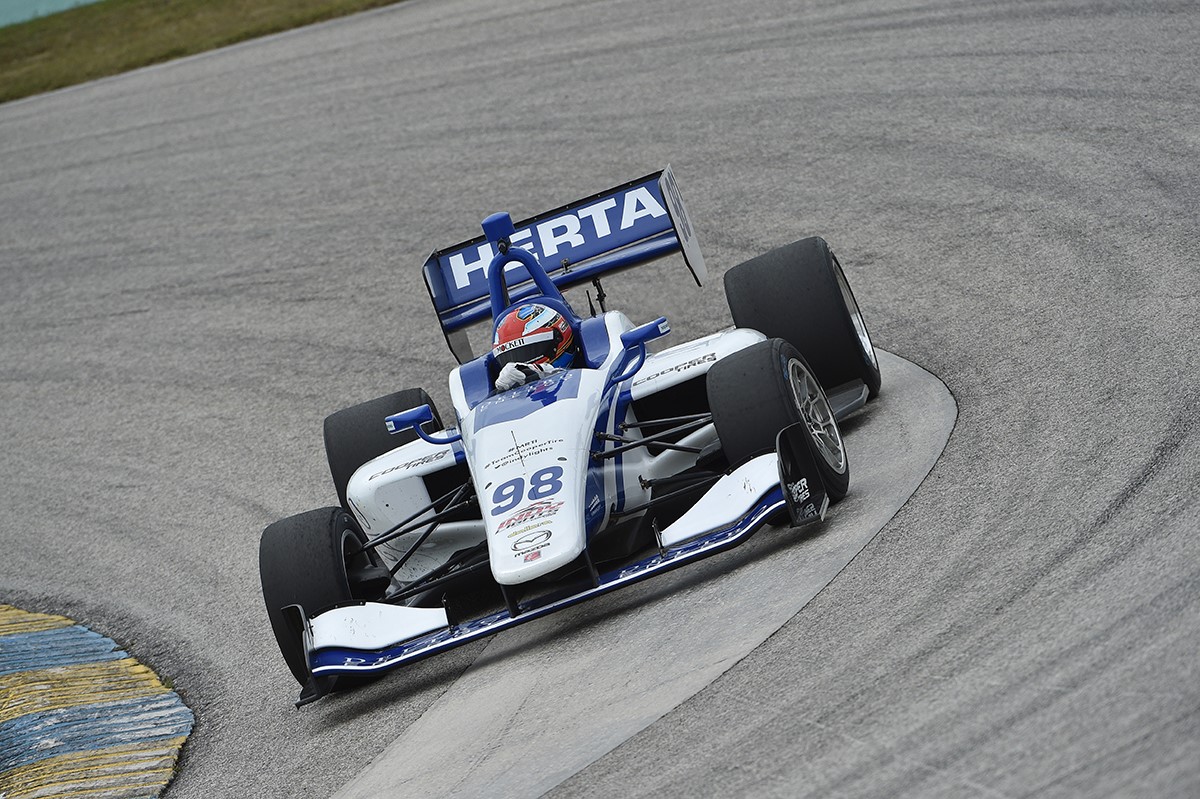Indy Lights gets updated push-to-pass system
 |
| Colton Herta, the Indy Lights rookie for Andretti-Steinbrenner Racing, tested the push-to-pass system recently at the Homestead-Miami Speedway in Florida. |
| IndyCar |
Tony Cotman, race director for Indy Lights, discussed the differences compared to last year’s boost option and the inspiration behind the concept. This year’s system puts the decision more in the driver’s hands.
“The biggest fundamental difference is last year we would program before the race, both how many times you can use it and the duration it would be on once you used it," said Cotman. “So let’s say we would be a pre-programmed amount of 10 times per race and we’re going to go for 15 seconds each time. That was all pre-programmed and done through the ECU (electronics control unit in the car).
“What we’ve done this year is we worked on last year’s [push-to-pass package], figuring out if we can use it through the timing lines [in the tracks]and the transponder [in the car]. We’ve kind of adopted a little bit of the DRS [drag reduction system]from Formula One – where if you are within one second of the car in front, the DRS automatically opens up the rear wing. For us, it’s similar. You have to be within one second of the car in front to activate it and then it’s up to the driver to hit the button and decide if he wants to use it," he said.
Cotman said that whenever an Indy Lights driver is within a second to the car in front, the dash flashes and tells him the system can be used based on the track and corner.
“If you really want to use it, it’s your choice," he added.
Colton Herta, the Indy Lights rookie for Andretti-Steinbrenner Racing, enjoyed having push-to-pass at his disposal at the Homestead test and sees its potential.
“It’s a pretty cool feature to have," said Herta. “It’s a 50-horsepower gain and it’s a bit of a difference this year because you have to be within a second of the person ahead. I think that’s good because, before you could use it to defend and it would just cancel everything out."
He added the push-to-pass system is a good feature, especially for street circuits like Saint Petersburg where it can be extremely tough to pass.
“It should make for some more overtaking opportunities," Herta said.
Cotman sees the burst rate of time being the same at every track, but depending on the size of the track and number of corners, the number of push-to-pass activations available will vary. As with what was recently announced for the Verizon IndyCar Series in 2017, push-to-pass will not be available to Indy Lights drivers for the race start or on restarts.
“Every time you use it, it will be a 10-second burst," Cotman said. “There will be an allotment [for number of uses]in the race, but it will be pretty significant, like 20, 25 or something large."
Part of the thinking behind the concept comes with the difficulty a faster driver can face when running across a slower competitor.
“Often, you can stay with them for two or three corners and then you kind of drop off or, after three laps, your tires go away. So you have to call them off. If you can get up there and stay up there for a couple of corners and hit a timing line, be within a second, you’ll get an opportunity to pass," he added.
